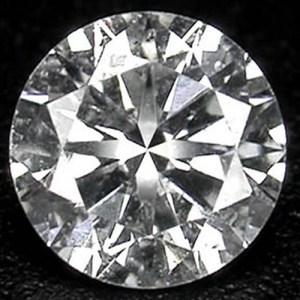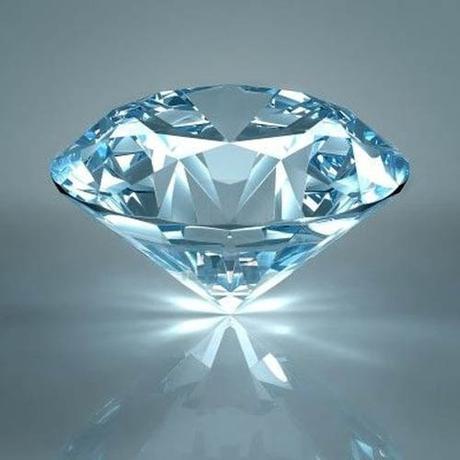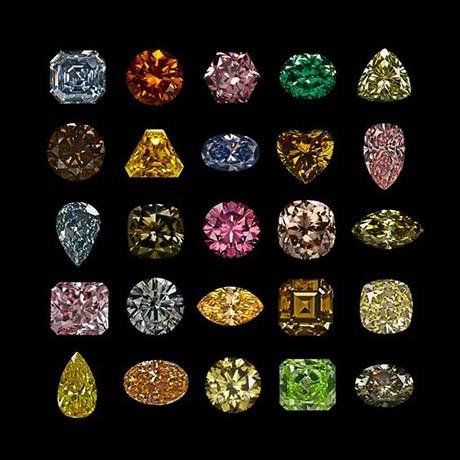 For thousands of years, diamonds have been at the center of admiration, disputes and even hard conflict. They have fascinated people more than any other precious stone and have become symbols of magic, social and political power and extreme sophistication. The diamonds we see today so bright and shiny are over 100 million years old, but their sparkle and vibrancy are still clear and fresh.
For thousands of years, diamonds have been at the center of admiration, disputes and even hard conflict. They have fascinated people more than any other precious stone and have become symbols of magic, social and political power and extreme sophistication. The diamonds we see today so bright and shiny are over 100 million years old, but their sparkle and vibrancy are still clear and fresh. Diamonds are formed deep in the earth, inside volcanoes and come to the surface through their eruption. As they come out of the depth of the earth, through an eruption that takes place at extremely high temperatures, there is a matter of a split second in which it is decided whether the rock will become plain carbon as the one we use for pencils or whether it will turn into a diamond. Surely, once a rock becomes a diamond, it is still raw, but its final value determines people to put in lots of effort and money to search for them.
While most people know that diamonds are formed in volcanoes, many people actually don't know that diamonds are also to be found in rivers and seas, those found in seas being some of the most qualitative diamonds you can find.
About 70% of extracted diamonds are not suited for jewelry, which makes the selection process a very hard one.
However, the fact that diamonds are a symbol of power, refinement and excellence makes these processes worth their while.

Today, gemologists with experience can learn a lot about a diamond (from its country of origin even to the mountain from which it has been extracted) only by a close look. Diamonds have very exact properties that can be easily traced to certain areas of the planet. Their color is also a strong indicator of a diamond's origin.
Cut diamonds can also be traced with almost certainty to a part of the world, as different areas have different ways of cutting them: there is Chinese cut for example and there are even specificities to the Indian way of processing diamonds, which are different from the way they are processed in the Netherlands.

Diamonds have a value of 10 on Mohs' scale of mineral hardness, which means that they are at the very top level of toughness. Thus, they are often needed in various industries and fields, such as mechanics and medicine. The diamonds used in these areas are usually man-made and are not considered as valuable on the jewelry market, as diamonds that are extracted from a mine.
There are some machines that can test out whether a diamond is man-made or extracted from the ground, but their accuracy is not always the highest, which is why gemology specialists, who can check a diamond's atoms and other specs, are still extremely important for the industry. Generally speaking though, while lab-made diamonds are still diamonds, gemologists will agree that a man-made diamond is in no case as valuable as one found in nature.
The value of a diamond is indicated by the four C's: carat (the weight of a diamond), its clarity (whether it has impurities and inclusions both on the inside and the outside), its color and its cut (a diamond cut in a brilliant shape, but that is cut too narrow or too wide will be worth less than one cut with precision).
A diamond that is not cut precisely won't reflect light very well. A diamond's uniqueness and beauty is given by the way in which its atoms are arranged: a diamond reflects light even when covered, which is something no other gem does.
Surely, the commercial aspect of a diamond is also important. This is why, when trying to obtain a fair price for a diamond, this is analyzed by three specialists, whose conclusions need to match. If only two out of three conclusions match, the process is usually redone.
Diamonds can vary very much in terms of price: from a hundred dollars to millions, but their symbolic value is what makes them so amazing, as almost anyone will be excited to receive a diamond.
Throughout history, diamonds have served as both personal statements, and as a symbol for relationships of love, peace and more. They are at the center of countless stories and have almost often been worn to confer the wearer a state of mind: from someone wearing it to know they are part of a group to a king wearing it on the battle field to channel the strength of the divine, diamonds have always been charged with meaning. And that's what makes them almost priceless.
The emerald, sapphire and ruby are the other three precious stones besides diamonds, but diamonds have been and still are the king of the precious stones.
Fraquoh and Franchomme
Further reading:
Just brilliant: The origins of "Diamonds are Forever" Attire Club in interview with Raj Mehta, Director of Rosy Blue Attire Club in interview with Filip Van Laere, Event Director of CARAT+P.S. We want to hear from you! Which diamond type do you like? Why? What other precious stones do you like? Share your feedback, questions or thoughts in the comments below! For more articles on style, fashion tips and cultural insights, you can subscribe to Attire Club via e-mail or follow us on Facebook, Twitter or Instagram!

